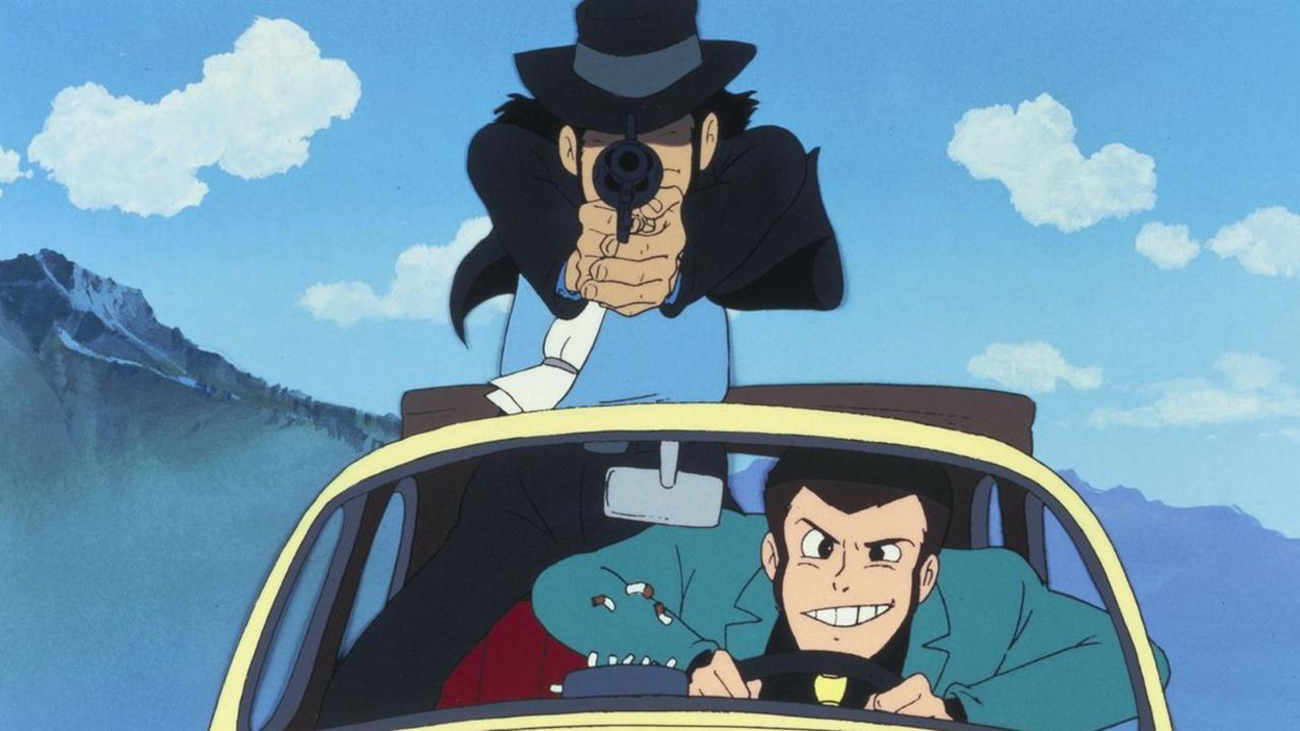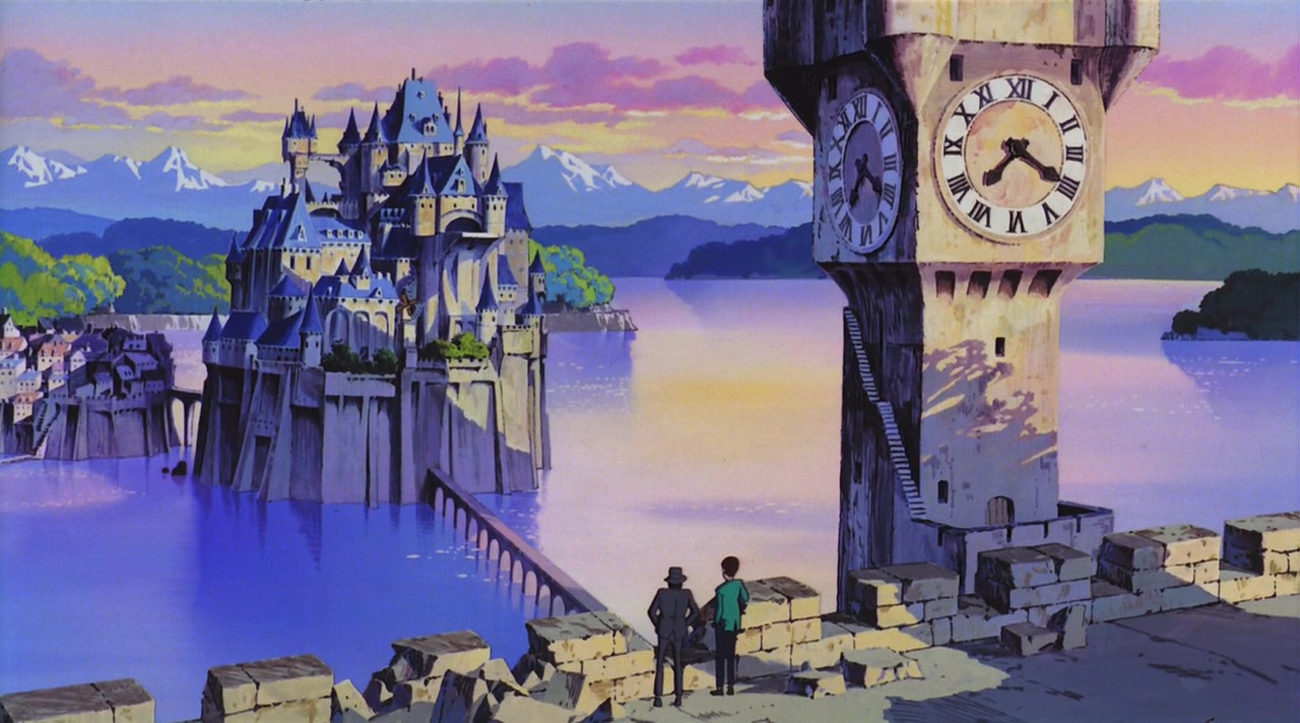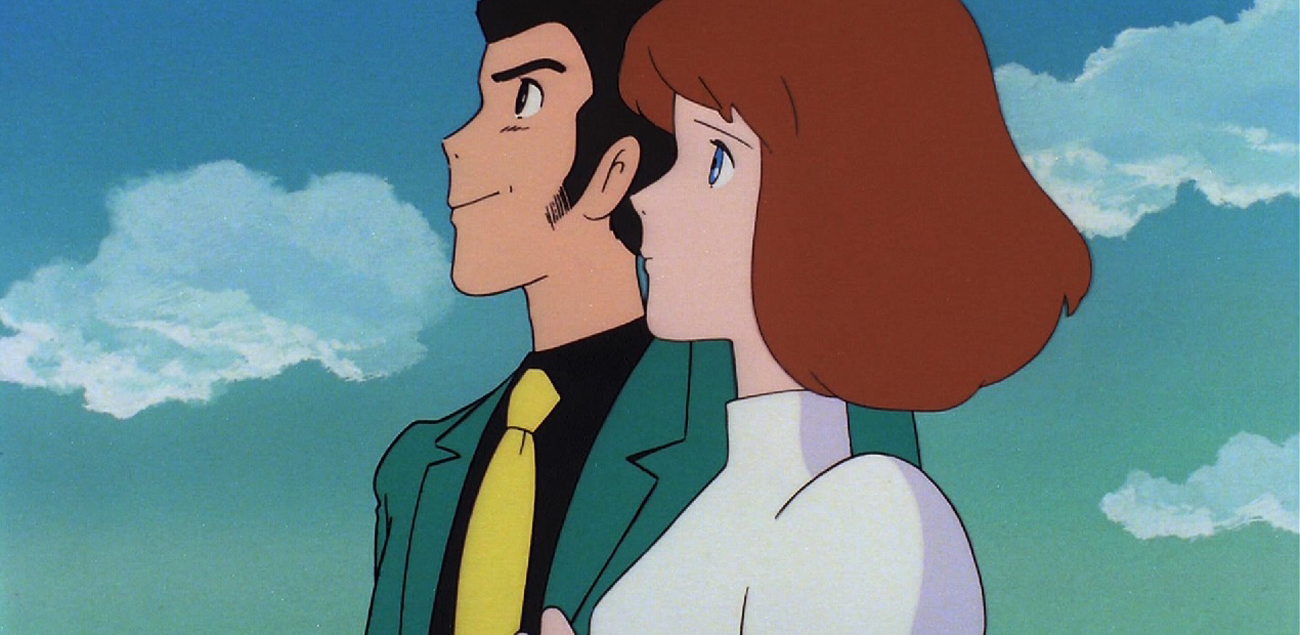If James Bond was ever turned into an anime then it could be easily compared to The Castle of Cagliostro, the pre-Studio Ghibli debut film of Hayao Miyazaki. Released in 1979, this film is based off the manga series, Lupin the 3rd, created by renowned Japanese artist Monkey Punch. The manga was also adapted into an anime series that began airing from 1977 through to 1980 which featured a handful of episodes directed by Miyazaki himself.
Given the era in which this animation was produced, I will admit I was unsure of what to expect from from it especially after reading its short summary. It certainly didn’t sound like any other Miyazaki film made in the year’s following The Castle of Cagliostro and I was hoping to have been proven wrong.

The Castle of Cagliostro opens with two thieves named Arsène Lupin III and his partner in crime Daisuke Jigen robbing a casino only to realise that the money they stole was all counterfeit. Arsène Lupin recognises the counterfeit bills to be the handy work of Prince Cagliostro, who he had tried to rob years ago.
Lupin decides to pay Cagliostro a visit at his castle but becomes sidetracked after saving a girl from a car chase by some thugs. Soon thereafter, we see more car chases, shoot outs, a burning plane and a damsel pinrcess locked up in the castle of Cagliostro.

The plot is simple and straightforward enough to follow but that’s not to say it’s a disappointment. Despite the predictability of this feature, Miyazaki’s touch makes the film unique from start to finish. Creating a fantasy world with big castles, flying mechanisms, slow pans across European-inspired landscapes; these are all just some of the characteristics that would later become classified as Miyazaki’s style across his future works like Castle in the Sky or Howl’s Moving Castle.
Miyazkai’s style and influence doesn’t end there. In directing and writing his characters (alongside co-writer Haruya Yamazaki), Miyazaki crafts characters who are likable and believable, particularly the ladies of The Castle of Cagliostro. Miyazaki’s noted penchant for strong women in many of his films is also noticable here with the kick-ass thief, Fujiko and Clarisse, the princess locked in Cagliostro’s castle. Though some may view the latter as owning the role of the ‘damsel-in-distress’, once viewers become familiar with her past it becomes easier to view her character as a girl trying to survive in an unfavourable situation.

Storytelling also has always been one of Miyazaki’s strongest talent. The director is capable of creating worlds full of pure imagination while filling it with realistic characters whose journeys and eventual destinations make each film feel like a life lesson has been learnt by the end of it. The ending for The Castle of Cagliostro was definitely a believable ending for it felt suited to Arsène Lupin’s character. I could go on for days about the philosophical and reltable qualities of Miyazaki’s films!
Finally, as this film is now available in Blu-ray, it must be said that the restoration and high-definition update for this feature is glorious! The colours are brighter, bolder and better blend to suit the character’s personalities, adding more beauty to the scenery in the background. The Castle of Cagliostro may not be one of Hayao Miyzaki’s top films nor one of his most memorable (though it certainly has become memorable for me personally) but it’s always interesting to see how a big name director started out early in their career before they would go on to become a household name.
